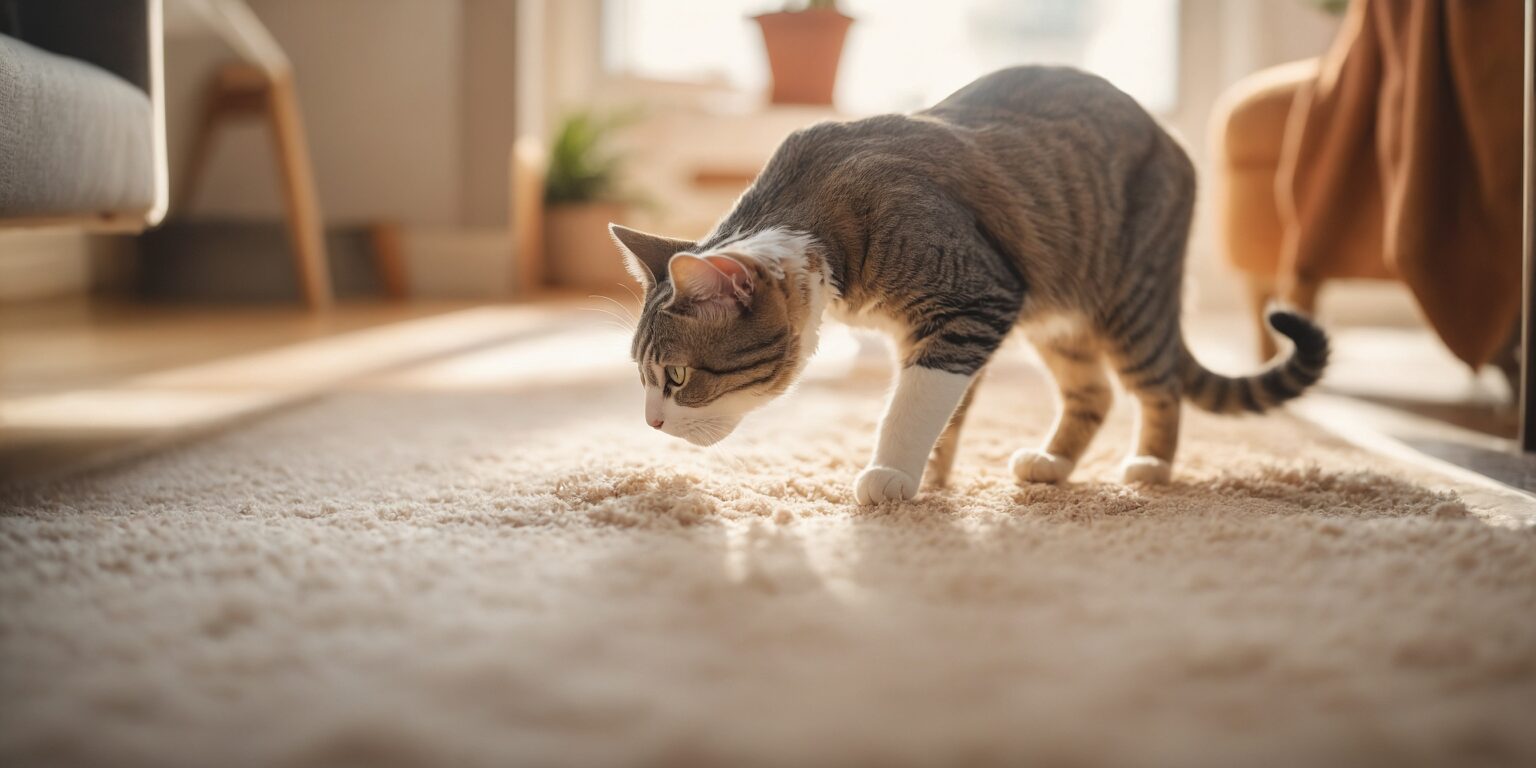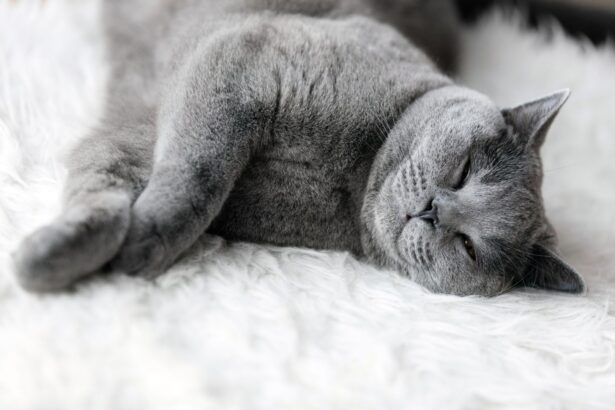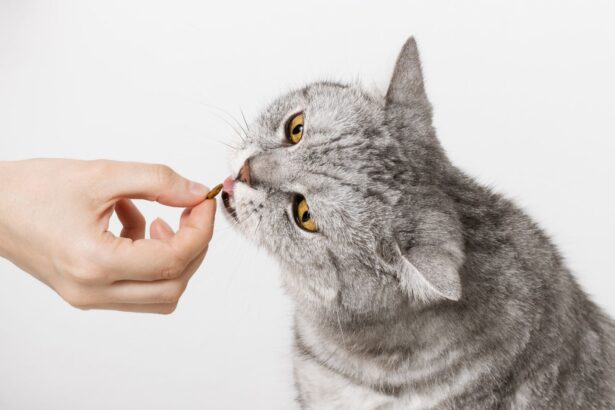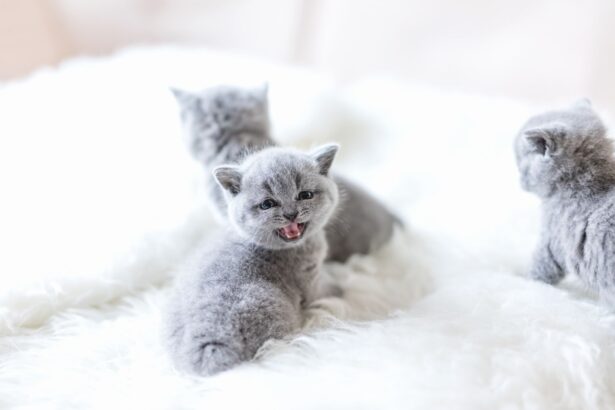Why your cat pees everywhere: understand the causes and fix them
Your sweet kitty has started peeing on the sofa, the rug, or right by the door? Take a breath—you’re not alone, and there’s always a reason behind it. Once you decode the “why,” the “how to fix it” gets much easier.
- Why your cat pees everywhere: understand the causes and fix them
- Spraying vs. urinating: spot the difference
- Stress and change: the most common triggers
- Medical causes: when to call the vet
- Litter box strategy that actually works
- Cleaning that stops repeat accidents
- Kind training and comfort-first routines
- Natural supports (with your vet’s OK)
- Conclusion
Spraying vs. urinating: spot the difference
First, figure out whether you’re dealing with territory marking or a litter box problem. The two look similar… but they’re not the same.
- Spraying: small amounts, strong smell, often on vertical surfaces (walls, doors, furniture legs).
- Urinating outside the box: larger puddles, usually on horizontal surfaces (carpets, beds, mats).
- Clue: spraying cats often back up to the surface with a twitching tail; urinating cats squat.
Surprising but true: even neutered males and spayed females can mark, especially when stressed or in conflict with another pet. It’s not spite—it’s communication.
Stress and change: the most common triggers
Cats thrive on predictability. A new baby, a different work schedule, renovations, a visiting dog, even moving the furniture can nudge a sensitive feline into house-soiling.
- Typical signs of stress: over-grooming, hiding, sudden clinginess, hissing, or reduced play.
- Make life feel safe: keep routines steady, offer hiding spots and high perches, and add calm, quiet zones.
- Pheromone diffusers or sprays can help many cats feel more secure.
Practical, gentle tip: turn “pee zones” into positive spaces for a few days—place a feeding station or scatter treats on the previously soiled area. Cats usually avoid eliminating where they eat.
If you need help reading stress signals, our guide to the signs of stress in cats can point you in the right direction.
Medical causes: when to call the vet
Sometimes peeing everywhere is your cat’s way of saying, “I hurt.” Urinary issues can be urgent, especially in males.
- Red flags: frequent trips to the box, straining, crying when urinating, blood in urine, licking the genitals, or peeing tiny amounts often.
- Possible causes: urinary tract infection, sterile cystitis, crystals or stones, pain (arthritis), or kidney issues.
- Don’t wait: a urinary blockage is an emergency—seek veterinary care promptly.
To understand these conditions better, Cornell’s overview of Feline Lower Urinary Tract Disease (FLUTD) is a reliable, vet-approved resource.
Litter box strategy that actually works
If the box setup doesn’t suit your cat, she’ll look for alternatives. A few tweaks can change everything.
- Box math: one box per cat, plus one extra, in different quiet locations (each floor if you have stairs).
- Size matters: choose large, open boxes; covered or tiny boxes can trap odors and feel cramped.
- Substrate: most cats prefer fine, unscented, clumping litter—switch gradually over a week.
- Placement: avoid noisy laundry rooms and busy hallways; keep boxes away from food and water.
- Cleanliness: scoop daily and deep-clean weekly; consistent freshness builds good habits.
For a deeper dive into litter types and what cats prefer, see our guide to choosing the best litter. And if you’re wondering where to place boxes for success, this layout guide can help you choose the ideal location.
Cleaning that stops repeat accidents
Smell is everything. If urine odor lingers, your cat may return to the scene. The right clean-up resets the space.
- Blot fresh urine, then use a pet-safe enzymatic cleaner designed to break down uric acids.
- Rinse with water and let it dry fully. Repeat if needed—stubborn spots may take two rounds.
- For old stains, use a UV flashlight to find hidden areas before cleaning.
Common mistake to avoid: never use bleach or ammonia-based products—these scents can attract cats back to the spot. Curious why? Here’s the science behind why bleach attracts cats.
Need a gentle deterrent while you retrain? Cover target zones temporarily with a washable mat, a litter-box-sized tray of the preferred litter, or place furniture to block access. For more safe aversions, see what smells cats hate and how to use them carefully around felines.
Kind training and comfort-first routines
Punishment backfires with cats. Positive, consistent cues build trust—and better bathroom habits.
- Reward the right spot: praise and treat your cat right after she uses the box.
- Set a daily rhythm: play sessions followed by meals and quiet time help regulate elimination.
- Reduce conflict: give each cat its own resources (bowls, beds, boxes, perches) to lower tension.
- Travel or renovations? Add pheromones and extra boxes before the change happens.
Original enrichment tip: schedule two short “hunt” games (wand toy or food puzzles), then feed a small meal. Many cats eliminate after play–eat cycles, so time box access right after.
Natural supports (with your vet’s OK)
Some gentle options can complement behavior and environment changes—always check with your vet first.
- Pheromone diffusers or sprays can reduce stress-related marking in multi-cat homes.
- Hydration boosters: a water fountain and a bit more wet food can support urinary comfort.
- Supplements: your vet may suggest options like D‑mannose or cranberry for certain urinary issues.
Note: avoid essential oils around cats; many are irritating or toxic. Stick to vet-recommended products.
Conclusion
When a cat pees everywhere, she’s sending a message—about stress, territory, discomfort, or her setup. Identify the cause, fix the environment, clean smart, and reinforce the box with kindness.
With a few thoughtful changes and, if needed, a veterinary check-up, most cats return to purr‑fect bathroom manners.
FAQ
Why is my cat peeing on my bed?
Beds smell like you—comforting in times of stress. It can also be a soft-surface preference. Rule out medical issues, clean with enzymes, and make the litter setup more appealing.
Will neutering stop spraying?
It prevents hormone-driven marking in many cats, but not all. Stress, conflict, or environmental triggers can still cause spraying, even after neutering.
How long until the accidents stop?
Simple setup issues can improve within days after changes. Stress or multi-cat conflicts may take 2–4 weeks of consistent routines. Medical causes need vet treatment first.
What cleaner works best for cat urine?
Use an enzymatic, pet-specific cleaner that breaks down uric acid crystals. Avoid bleach or ammonia—they can encourage repeat marking.








